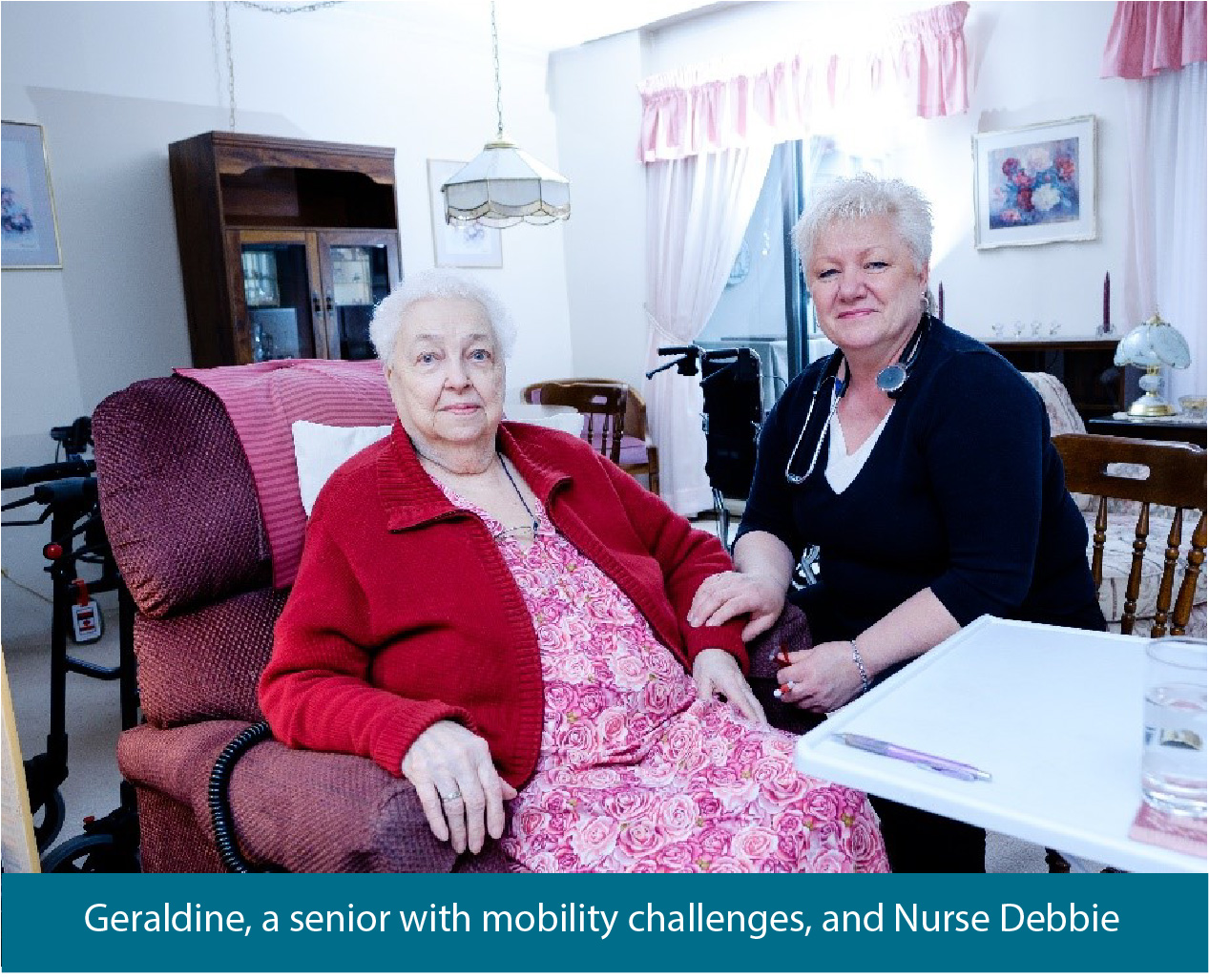June 8, 2018.
Frail elderly patients living in Fraser Health communities are getting coordinated, comprehensive support in their homes from nurses and teams, as an extension of the care they receive from their family doctor or nurse practitioner.
READ MORE:
|
|
It’s all part of a transformational shift in primary care, enabled by partnerships between family physicians, divisions of family practice, and Fraser Health’s Home Health and community-based services.
The new model was inspired by the work of the Fraser Northwest Division of Family Practice. In late 2015, the Division hired a nurse (“Nurse Debbie”) to support family physicians in the care of homebound frail elderly patients. These family doctors had been frustrated when trying to access support and services for patients and caregivers. Too many of their frail elderly patients were unnecessarily ending up in the emergency room (ER).

By working with Nurse Debbie, family physicians were able to direct and extend primary care services into patients’ homes to ensure they were getting the care they needed quickly when a health issue emerged or before problems developed. The nurse provided hands-on care and case management, as well as coordination of community services.
In one year, between January and December 2016, the addition of just one nurse had a significant impact. Nurse Debbie saw 469 patients in their homes, preventing more than 500 patient visits to the ER and an estimated 17,000 in-patient days, and saving an estimated $3.1 million in health care costs.
With these exciting results in hand, Fraser Health hired Debbie and two additional nurses to work with family physicians in the region and plans to have 13 nurses in place by the end of 2018.
Today, variations of the “Nurse Debbie” model are spreading to Surrey, Maple Ridge and Pitt Meadows, and Chilliwack, as well as other communities. All are enabled by a partnership between the local division of family practice and health authority, who are co-creating team-based care strategies based on local needs and connecting doctors and patients with allied health providers and community services.
In the Ridge Meadows area (Maple Ridge and Pitt Meadows), 19 family doctors are referring homebound frail elderly patients with urgent health concerns to a Rapid Response Team that includes “Nurse Terry,” who sees patients in their homes to prevent or delay hospital visits. Between April 2017 and January 2018, 92% of these home visits prevented a patient’s trip to the ER.
“It’s been a great success, and we’re excited to be gearing up to expand it more widely across the community,” says Treena Innes, Executive Director of the Ridge Meadows Division of Family Practice. She says that starting in mid-2018, additional nurses will join four networks in Ridge Meadows that will each support 10 to 20 family doctors.
In Surrey-North Delta, Dr Lawrence Yang and his partners are testing a similar model. Directed by the GP, the nurse assesses the safety of their patients at home, assists with acute medical needs, helps patients self-manage chronic conditions, and connects them to resources in the community. She also educates the family doctor team about resources that are available and shares information with the physicians in real time through the electronic medical record.
“As an example, I had a patient with advanced lung disease who had developed severe leg swelling,” says Dr Yang. “I wasn't able to see him, and travelling was out of the question for the patient in his condition. The nurse went out to see him and learned that the swelling was related to something we could address. I was able to prescribe medication, and he didn't even have to leave his home or use the ER.”
“We’re hearing from patients who say they are impressed with the care team collaboration and communication. There is no doubt they feel better cared for.”
In Chilliwack, Agassiz-Harrison and Hope, licensed practical nurses (LPNs) and registered nurses (RNs) work in pairs and collaborate with family physicians and/or nurse practitioners to support patients with advanced health care needs. Together with the family doctor and/or nurse practitioner, community support workers and other providers, they complete a seamless loop of communication, enabling and supporting truly integrated team-based patient care.
Twenty-four community care teams have been established to-date in the area. Over a ten-month period, the work of the first team resulted in an estimated 19% reduction in ER visits and 21% reduction in in-patients days.
The defining success factor in all of these examples – which is missing from most traditional home nursing models – is the primary care nurse’s partnership with the patient’s family doctor. Working as a team, the GP can direct the nurse’s care in the home, when necessary, with the patient’s medical history available to both providers to inform in-home assessments and treatment options. Information about home and community supports that are arranged by the nurse are communicated back to the physician to further aid comprehensive care planning for patients.
“The teams aren't going in as health authority staff but as an extension of the physician, who the patient and their families already know and love,” says Dr Melanie Madill, a Chilliwack-area family doctor.
“They are embraced as part of that therapeutic team rather than the system. If you try to do it separated from that core relationship, I don't think you're going to be as successful.”
“This is not just change. We are transforming how we work,” says Catherine Wiebe, Director, Clinical Operations, Chilliwack/Agassiz/Hope, Fraser Health.
“One of the challenges is maintaining the old system while moving toward the new,” she adds. “Despite moments of despair and of great joy, and with the goal of providing patients with the right care at the right time and the right place, we are committed to making this work.”
